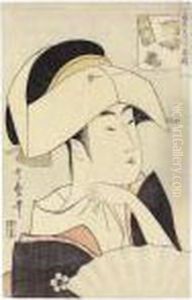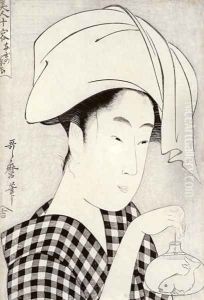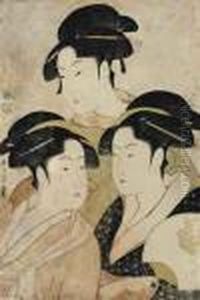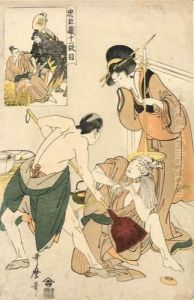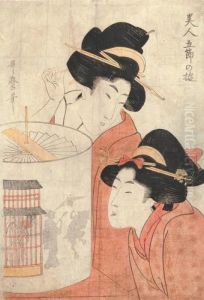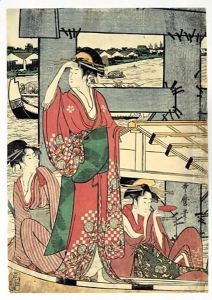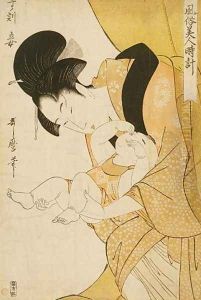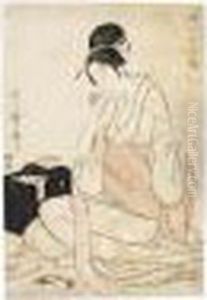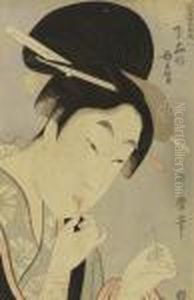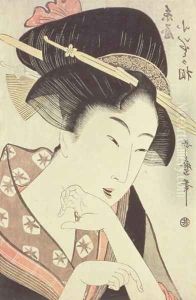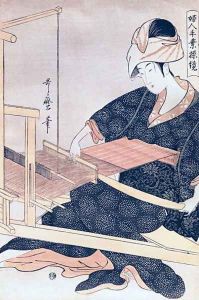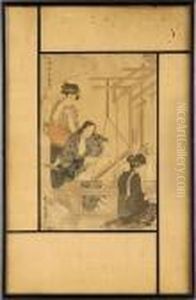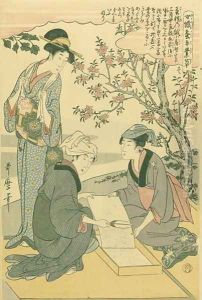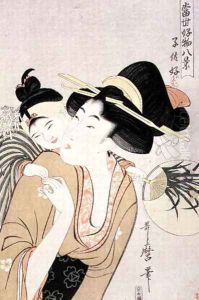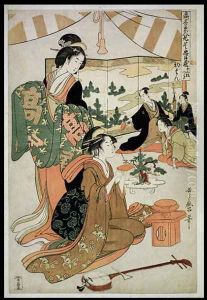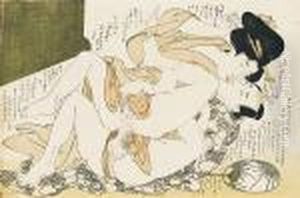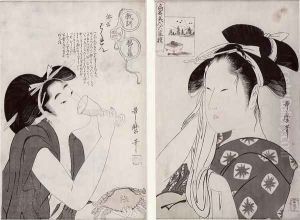





An impertinent woman, from the series Kyokun oya no megane Education Seen Through the Parents Eyes c.1803 and Asahiya Goke the widow, from the series Komei bijin rokkasen, c.1796
-
About Reproduction
Discover the allure of art with our faithful reproduction of "An impertinent woman, from the series Kyokun oya no megane Education Seen Through the Parents Eyes c.1803 and Asahiya Goke the widow, from the series Komei bijin rokkasen, c.1796", originally brought to life by the talented Kitagawa Utamaro. Unlike posters or prints, our hand-painted oil painting breathes an unique sense of depth and texture into your space. Every detail, every stroke, and every texture is meticulously recreated, paying the perfect homage to Kitagawa Utamaro and his artistic vision.
Owning this piece is more than just decoration - it's a statement of your refined taste in art. Let the vibrant colors and intricate details of this replica serve as a daily reminder of the beauty in our world. Elevate your decor and appreciate the richness of art with our replica of this masterpiece.
-
Painting Description
"An Impertinent Woman" and "Asahiya Goke the Widow" are two notable works by Kitagawa Utamaro (c. 1753 – 1806), a prominent Japanese ukiyo-e artist known for his exquisite portraits of women. Utamaro's work is characterized by a delicate and refined aesthetic, often capturing the beauty and subtleties of female subjects in the context of Edo period (1603-1868) Japan.
"An Impertinent Woman," from the series "Kyokun oya no megane" (Education Seen Through the Parents' Eyes), created circa 1803, is a striking example of Utamaro's exploration of character and emotion through portraiture. The series presents a satirical view on contemporary education and manners, with each print illustrating a moral lesson for the viewer. In this particular print, Utamaro depicts a woman in a moment of impertinence, possibly as a cautionary example of behavior to be avoided. The intricate details of her kimono and the expressive features of her face are hallmarks of Utamaro's style.
"Asahiya Goke the Widow," from the series "Komei bijin rokkasen" (Six Renowned Beauties), created circa 1796, showcases Utamaro's talent for capturing the essence of his subjects. This series features portraits of well-known beauties of the time, each woman chosen for her fame and distinctive appeal. Asahiya Goke, a widow, is portrayed with an air of quiet elegance and introspection, reflecting the refined tastes of the Edo period's cultured society. The print is a testament to Utamaro's mastery of line and his ability to convey depth of character through the medium of woodblock printing.
Both works are exemplary of Utamaro's contribution to the ukiyo-e genre, particularly his focus on bijinga (pictures of beautiful women). His prints are celebrated for their nuanced portrayal of women from various walks of life, offering insights into the cultural and social dynamics of the Edo period. These pieces remain influential, providing a window into the world of Japanese art during a time when it was flourishing under the patronage of a burgeoning merchant class.
-
Lead Time & Shipping
When you order this oil painting replica, it typically takes 2-3 weeks to paint. If the artwork is more complex, it might need a little more time to ensure the best quality. Once it's ready, we'll send you a photo for your approval. After you give the green light, we'll ship it to you for free.
-
Return & Refund
We believe in the quality of our hand-painted oil painting reproductions, and your satisfaction is our priority. If for any reason, you are not completely satisfied with your purchase, we offer a 45-day return policy. You can return your artwork within 45 days of receipt and receive a full refund. Please note that the artwork must be returned in the original packaging and in the same condition as it was received.





